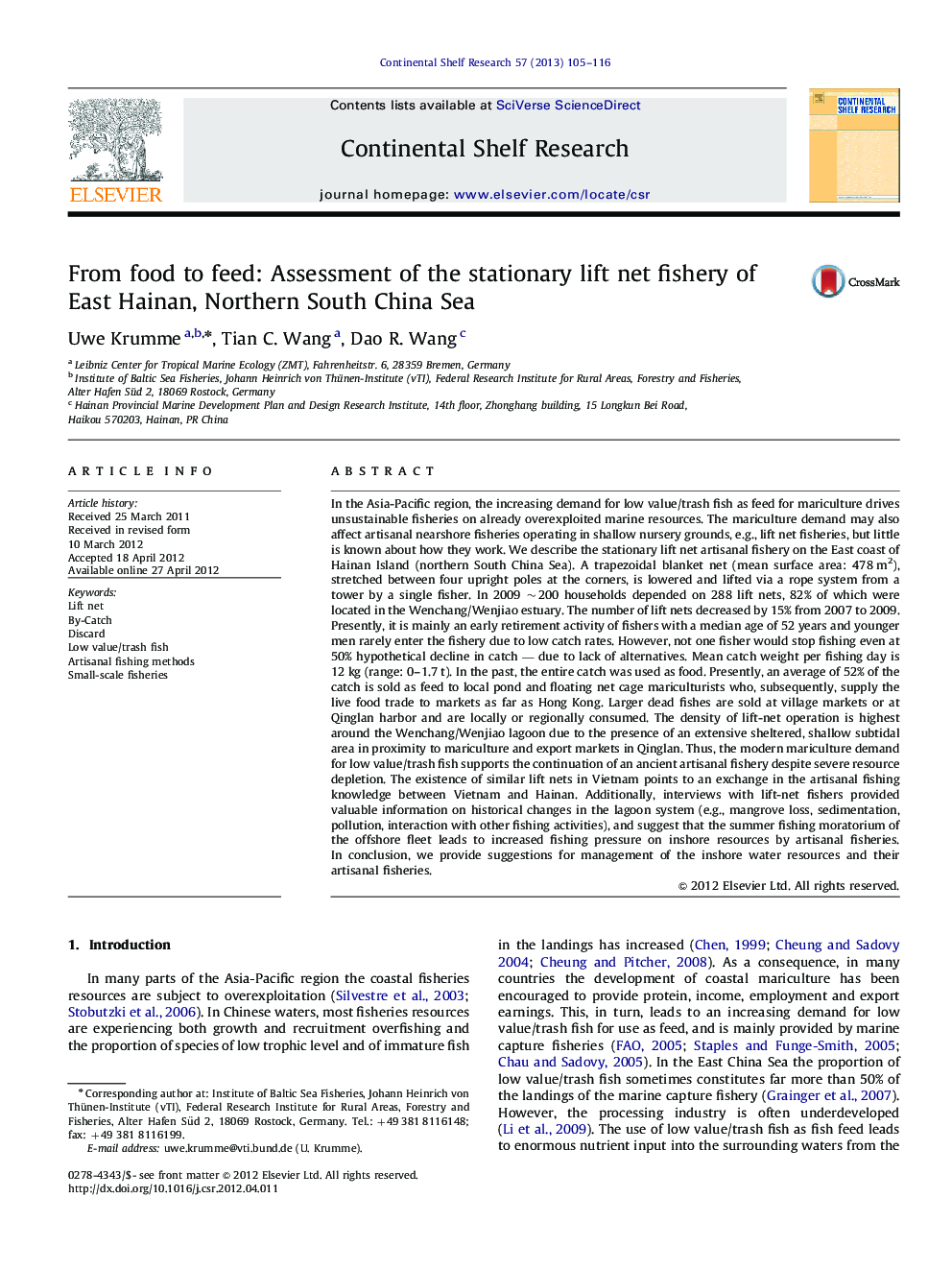| کد مقاله | کد نشریه | سال انتشار | مقاله انگلیسی | نسخه تمام متن |
|---|---|---|---|---|
| 4532217 | 1626154 | 2013 | 12 صفحه PDF | دانلود رایگان |

In the Asia-Pacific region, the increasing demand for low value/trash fish as feed for mariculture drives unsustainable fisheries on already overexploited marine resources. The mariculture demand may also affect artisanal nearshore fisheries operating in shallow nursery grounds, e.g., lift net fisheries, but little is known about how they work. We describe the stationary lift net artisanal fishery on the East coast of Hainan Island (northern South China Sea). A trapezoidal blanket net (mean surface area: 478 m2), stretched between four upright poles at the corners, is lowered and lifted via a rope system from a tower by a single fisher. In 2009 ∼200 households depended on 288 lift nets, 82% of which were located in the Wenchang/Wenjiao estuary. The number of lift nets decreased by 15% from 2007 to 2009. Presently, it is mainly an early retirement activity of fishers with a median age of 52 years and younger men rarely enter the fishery due to low catch rates. However, not one fisher would stop fishing even at 50% hypothetical decline in catch — due to lack of alternatives. Mean catch weight per fishing day is 12 kg (range: 0–1.7 t). In the past, the entire catch was used as food. Presently, an average of 52% of the catch is sold as feed to local pond and floating net cage mariculturists who, subsequently, supply the live food trade to markets as far as Hong Kong. Larger dead fishes are sold at village markets or at Qinglan harbor and are locally or regionally consumed. The density of lift-net operation is highest around the Wenchang/Wenjiao lagoon due to the presence of an extensive sheltered, shallow subtidal area in proximity to mariculture and export markets in Qinglan. Thus, the modern mariculture demand for low value/trash fish supports the continuation of an ancient artisanal fishery despite severe resource depletion. The existence of similar lift nets in Vietnam points to an exchange in the artisanal fishing knowledge between Vietnam and Hainan. Additionally, interviews with lift-net fishers provided valuable information on historical changes in the lagoon system (e.g., mangrove loss, sedimentation, pollution, interaction with other fishing activities), and suggest that the summer fishing moratorium of the offshore fleet leads to increased fishing pressure on inshore resources by artisanal fisheries. In conclusion, we provide suggestions for management of the inshore water resources and their artisanal fisheries.
► We assess the artisanal lift net fishery in East Hainan.
► Socioeconomic aspects of the fishery and reasons for shifts in fisher demographics are described.
► The fishery shifted from subsistence fishing for local consumption to one that now sells >50% to mariculture as feed.
► Mariculture demand for low value/trash fish supports a fishery despite severe resource depletion.
► Summer moratorium may increase artisanal fishing pressure on inshore resources.
Journal: Continental Shelf Research - Volume 57, 1 April 2013, Pages 105–116